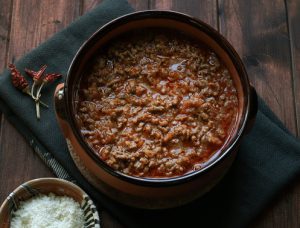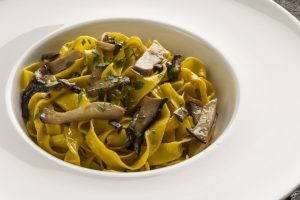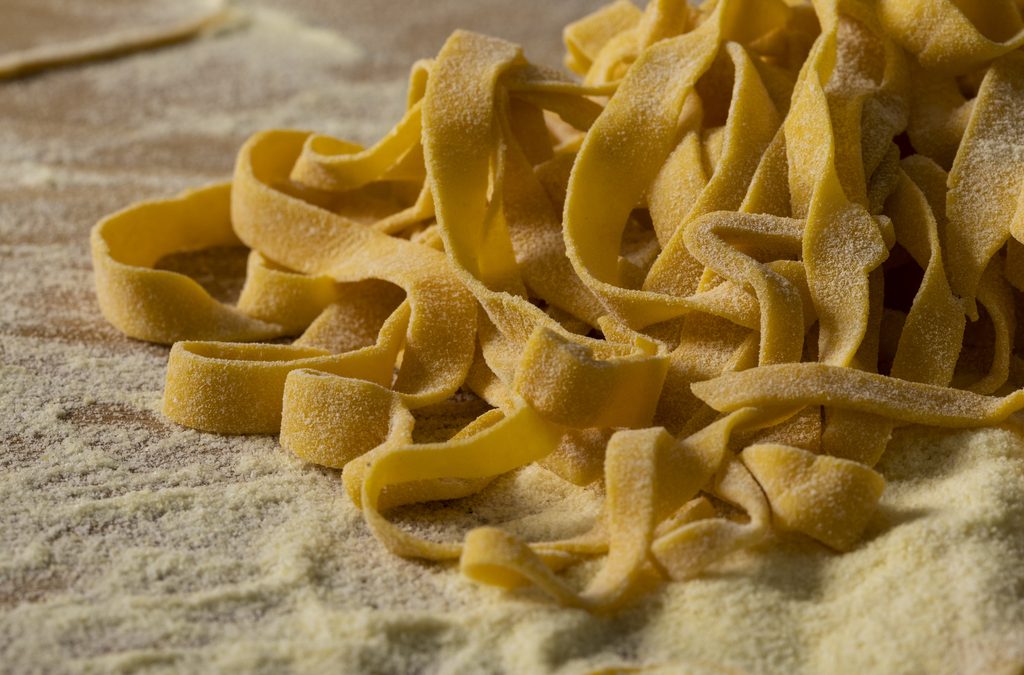Tagliatelle are a type of fresh egg pasta, known worldwide and particularly famous in the Emilia-Romagna region, their territory of origin.
Their birth is surrounded by mystery and legend and as often happens, behind the secret of their origin lies a “heartfelt” gesture. The story goes that the recipe was created in Bologna in the 14th Century on the occasion of the wedding of Lucrezia Borgia, daughter of Pope Alexander VI and sister of the warlord Cesare Borgia.
Read this article also in German and Italian.
Lucrezia was known for her long blond hair, which she loved to adorn and perfume with gems and flowers.
And so it was that Giovanni II Bentivoglio, lord of the city of Bologna ordered his cook Zefirano to create a special dish for Lucrezia’s visit to the town. The Maestro, paying homage to the beautiful lady, let himself be inspired by her long blond hair and created a type of fresh pasta that might resemble her.
The thin strips of pasta were called “Tagliatelle” in honour of the accurate and precise cut that Zefirano decided to give the pasta.
Some versions of the legend have it that the first person to invent them was a famous cook from Bologna, who worked for the aristocracy in the 15th Century and created tagliatelle for the wedding of Galeazzo Maria Sforza, the Duke of Milan.
Leaving aside its origins, this type of pasta soon became popular across Italy and today all over the world.
Over the years, tagliatelle has become a staple of the Emilian cuisine and has been combined with a variety of rich sauces such as the Bolognese ragout. (An easy recipe is available on the cuciniamoitaly to make a tasty ragout sauce)
Today, tagliatelle is one of the most iconic and versatile pastas, enjoyed all over the world. Served in many variations, from elegant to informal, in fine restaurants and home kitchens. Their fascinating history and delicious flavour make it a dish that continues to be enjoyed by generations of foodies.

Trivia
Besides the myth of the origin of tagliatelle, there are also some interesting trivia about them that not everyone knows, such as their width: traditional tagliatelle in Bologna measure 8 mm, or 7 mm uncooked, which is the 12.270th part of the height of the Asinelli Tower.
Another legend has it that a 19th Century Bolognese cook challenged a friend to find a blade of grass when making tagliatelle. The friend tried in vain, proving the thinness of the pasta strips. Tagliatelle was also the protagonist of a world length challenge, which in 2023 was won by Lucanian chefs with 140 metres of fresh pasta as long and thin as guitar strings against the last record that was of 120.
And if this product conquers your palate, then celebrate Tagliatella Day with us in Italy on 6 th February.
Tagliatelle with mushrooms
Making tagliatelle at home is a simple process requiring few ingredients and just a little practice. The basic recipe calls for wheat flour (the type of flour can be modified to suit your taste and needs) and eggs.
Once the ingredients are mixed together and with a bit of manual work, a soft and elastic dough is obtained, which is left to rest for 30 minutes before being rolled out with a rolling pin and then cut into strips. The cooking time for the pasta in boiling salted water is about 2-4 minutes. Once drained, they are ready to be dressed with a sauce of your choice.
Thanks to their versatility and countless possible combinations Tagliatelle, are real favourite with chefs all over the world. Chef Danilo Angè has a tasty and easy version of the Tagliatelle with funghi for you on the website (Cuciniamo IG).
Enjoy!


